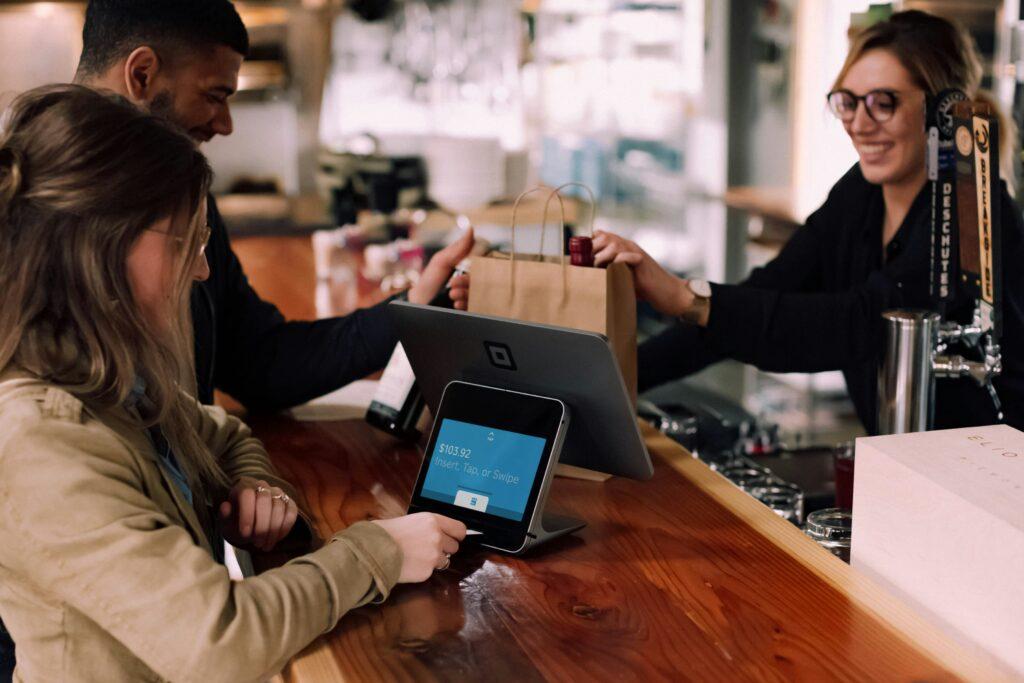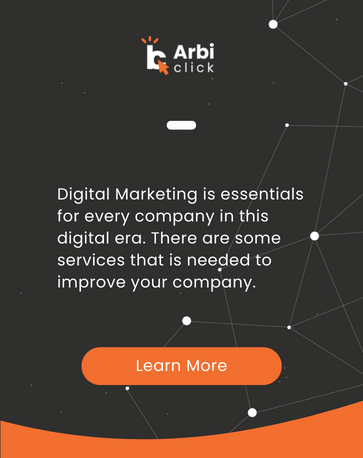Engagement Marketing: Building Real and Personal Connection

Getting likes or views isn’t enough anymore. You can have thousands of followers, millions of impressions, and impressive reach metrics, but if nobody’s actually engaging with your content, those numbers are essentially empty. They look good in a report, but they don’t translate to business growth. Here’s where engagement marketing plays.
The real challenge for brands right now is engagement, creating meaningful interactions that make people stop scrolling, actually care about what you’re saying, and feel compelled to connect with your brand. It’s the difference between someone passively seeing your post and someone actively participating in your brand story.
Here’s what many businesses get wrong: they confuse attention with engagement. Sure, you might grab someone’s attention for a split second as they scroll through their feed, but did you create any lasting impact? Did they remember you five minutes later? Did they feel anything? Did they take any action? Probably not.
That’s the problem with traditional advertising approaches that just broadcast messages without inviting any kind of response or interaction.
Engagement marketing flips this script entirely. It isn’t just about chasing vanity metrics or accumulating followers who never interact with you. It’s about building actual relationships with real people.
When customers feel heard, valued, and included in your brand’s journey, something powerful happens, they transform from passive observers into active participants.
They stop being just buyers and become brand advocates, the kind of people who voluntarily promote your products to their friends, defend your brand in online discussions, and stick with you even when competitors offer lower prices.
Think about the brands you personally engage with. The ones whose Instagram stories you always watch, whose newsletters you actually read instead of deleting, whose posts you save or share.
These brands have cracked the engagement code. They’ve figured out how to make you feel like you’re part of something bigger than a transaction. That’s exactly what we’re going to explore in this guide.
Let’s dive deep into how you can level up your engagement marketing strategy this year and turn your audience from passive scrollers into an active, engaged community that genuinely cares about your brand.
Also read: Easy 5 Essential SEO Strategies for Ecommerce Marketing Websites

Learn Engagement Marketing Closely
Let’s get clear on what we’re actually talking about here. Engagement marketing is the practice of encouraging active participation between your brand and your audience.
It’s a fundamental shift from the old-school marketing playbook where brands just pushed out ads and promotional messages, hoping someone would pay attention.
Instead of shouting “Buy our stuff!” into the void, engagement marketing is about sparking genuine conversations, creating meaningful interactions, and designing experiences that naturally invite people into your brand story. You’re not interrupting their day with ads—you’re becoming a welcome part of it.
So what does engagement actually look like in practice? It takes many forms:
Social Media Interactions
– Likes, shares, and comments on your social posts
– Customers tagging your brand in their own content
– Direct messages and mentions
– People saving your posts for later reference
Active Participatio
– Joining challenges or campaigns you create
– Responding to polls and questions
– Attending live streams or virtual events
– Participating in giveaways and contests
Direct Communication
– Replying to your emails (not just opening them)
– Leaving reviews and testimonials
– Filling out surveys and giving feedback
– Asking questions about your products or services
Meaningful Interactions
– Time spent reading your blog posts or watching your videos
– Clicking through to learn more about your offerings
– Exploring multiple pages on your website
– Downloading resources or signing up for your newsletter
In short, engagement is the fundamental difference between an audience that passively scrolls past your content without a second thought, and one that actively sticks with you, interacts regularly, and genuinely cares about what you have to say. It’s the bridge between awareness and loyalty.
Also read: Thriving the Digital Marketing Landscape: Trends and Tactics

Why Engagement Matters Is Way More Important Than It Seems
You might be wondering: why put so much effort into engagement when you could just focus on reaching more people? Here’s why engagement has become the most important metric for modern brands.
Trust and Loyalty
We live in an era of extreme skepticism. People are bombarded with ads, scams, and empty promises every single day.
They’ve developed strong filters that automatically tune out most marketing messages. Breaking through that wall requires something traditional advertising can’t provide: genuine connection.
People develop loyalty to brands that actually listen to them and interact with them like humans, not transaction machines. When you consistently engage with your audience, responding to their comments, acknowledging their feedback, involving them in decisions, you demonstrate that you care about more than just their wallets.
You’re showing them there are real people behind the logo who value their input. That builds the kind of trust that turns one-time buyers into lifetime customers.
Visibility and Growth
Here’s something many marketers overlook: social media algorithms are designed to reward engagement, not just content creation.
Platforms like Instagram, Facebook, TikTok, and LinkedIn want to show users content that sparks interaction because engaged users spend more time on the platform.
This means the more interactions your content generates, comments, shares, saves, meaningful reactions, the more the algorithm pushes it to wider audiences.
You get exponentially more visibility without spending a cent on advertising. A highly engaging post can reach 10x more people than a post with similar follower counts but low engagement. That’s free organic growth, and it’s incredibly valuable.
Better Conversions
Here’s a stat that should grab your attention: engaged customers are roughly three times more likely to make a purchase compared to passive audience members. Why? Because engagement builds emotional connection, and people buy based on emotion far more than logic.
When someone has interacted with your brand multiple times, they’ve commented on your posts, watched your videos, read your emails, participated in your polls, they feel like they know you.
You’re not some faceless corporation anymore; you’re a brand they have a relationship with. That familiarity and trust dramatically lowers the barrier to purchase. They’re not taking a risk on an unknown entity; they’re buying from someone they feel connected to.
Organic Advocacy
This is where engagement marketing gets really powerful. When people are truly engaged with your brand, when they feel genuinely connected and valued, they naturally become advocates.
They don’t need incentives or referral programs (though those help). They share your content because they want to. They recommend your products to friends because they genuinely believe in them. They defend your brand in online discussions because they feel personally invested in your success.
This organic word-of-mouth marketing is the absolute best kind of promotion you can get. It’s authentic, it’s trusted by the recipient (because it’s coming from a friend, not an ad), and it costs you nothing.
A single engaged customer who shares your brand with their network can be worth more than thousands of dollars in paid advertising.
Also read: Best 5 Proven Digital Marketing Strategies

How to Improve Your Brand’s Engagement Marketing
Knowing why engagement matters is one thing. Actually building an engaged audience is another. Here’s how to do it effectively.
1. Know Your Audience Deeply
You can’t engage meaningfully with people you don’t understand. Surface-level demographics aren’t enough anymore. You need to go deeper, what keeps them up at night? What are they passionate about? What problems are they trying to solve? What content do they save and share?
Use every tool at your disposal to build this understanding:
– Dive into your analytics to see what content performs best
– Read through comments and DMs to understand their concerns
– Survey your audience directly with questions
– Monitor what they’re talking about on social media
– Pay attention to the questions they ask most frequently
The more relevant your content feels to their actual lives and interests, the more they’ll engage with it. Generic content gets ignored. Specific, targeted content that speaks to real needs gets interaction.
2. Create Content That Invites Participation
Passive content is incredibly easy to scroll past. A simple product photo with a caption? People will glance at it for a split second and move on. But content that requires or invites participation? That stops the scroll.
Instead of just posting, create opportunities for your audience to interact:
Polls and Surveys
“Which color should we launch next—black or navy?” or “What’s your biggest challenge with [topic]?” People love sharing their opinions, and polls take virtually no effort to engage with.
Contests and Giveaways
These are engagement goldmines when done right. “Tag a friend who needs this” or “Share your story in the comments to enter” naturally generates interaction. Just make sure the prize is relevant to your brand so you attract the right audience.
Interactive Videos and Quizzes
Videos that ask questions, personality quizzes, “this or that” games—anything that requires active participation rather than passive consumption.
Instagram Story Features
Question stickers, poll stickers, emoji sliders, and quiz stickers are built specifically for engagement. Use them regularly. They’re easy for your audience and give you valuable insights.
Fill-in-the-Blank Posts
“My morning routine isn’t complete without _____” or “The best advice I ever got was _____” These simple prompts can generate dozens of comments from people eager to share.
3. Tell Stories, Not Just Sell Products
Nobody wakes up excited to see more product advertisements. But people are hardwired to connect with stories. Stories create emotional resonance. They make abstract concepts tangible. They help people see themselves in your brand narrative.
Share different types of stories consistently:
Behind-the-Scenes Moments
Show how products are made, introduce team members, share the messy reality of running your business. This humanizes your brand and makes people feel like insiders.
Customer Success Stories
Real stories from real customers are engagement magnets. They provide social proof, inspire others, and create a sense of community. “Meet Sarah, who used our product to achieve [result]” is infinitely more engaging than “Buy our product for [benefit].”
Your Brand’s Journey and Values
Share why you started the business, what challenges you’ve overcome, what you stand for. People want to support brands whose values align with their own. Being transparent about your mission creates deeper connections than product features ever could.
Educational Narratives
Turn tutorials and tips into stories. Instead of “5 Ways to Use Our Product,” try “How Jane Transformed Her Morning Routine and Saved 30 Minutes Every Day.”

4. Be Human and Authentic
This might be the most important point on this entire list. Modern audiences have incredibly sensitive authenticity detectors. They can spot corporate speak, fake enthusiasm, and manufactured relatability from a mile away. And when they detect it? They disengage immediately.
Keep your tone genuine and conversational. Write like you’re talking to a friend, not presenting to a boardroom. Reply to comments with real responses, not generic “Thanks for sharing!” copy-paste messages. When something goes wrong, acknowledge it honestly instead of hiding behind PR statements.
Show the actual people behind the brand. Features faces in your content. Share personal stories from team members. Let your personality shine through.
The goal isn’t to be perfect, it’s to be real. A brand that admits mistakes and shows vulnerability is far more engaging than one that maintains a polished, untouchable image.
Step 5: Pick the Right Channels
A perfect message delivered to the wrong place is still a failed campaign. You need to show up where your audience actually is. Different segments hang out in different places:
– Gen Z? You need to be on TikTok and Instagram
– B2B professionals? LinkedIn is your friend
– DIY enthusiasts? Pinterest and YouTube tutorials
– Local community? Facebook groups and local events
– Tech-savvy early adopters? Twitter (X) and Reddit
Don’t spread yourself too thin. It’s better to dominate two platforms where your audience lives than to have a weak presence on ten platforms.
Step 6: Measure & Refine
Target marketing isn’t “set it and forget it.” The most successful marketers are constantly testing, measuring, and adjusting. Track everything:
– Click-through rates (are people interested?)
– Conversion rates (are they taking action?)
– Engagement metrics (are they interacting?)
– Cost per acquisition (is it profitable?)
– Customer lifetime value (are you attracting quality customers?)
Run A/B tests. Try different messages, images, and calls-to-action. What works for one segment might flop with another. Let the data guide you, but also pay attention to qualitative feedback. Sometimes a campaign that looks good on paper doesn’t resonate emotionally.
Also read: Integrated Marketing: Create Seamless Brand Experience

Viral Engagement Marketing Hacks This Year
The landscape keeps evolving, and staying current means understanding where engagement is headed. Here are the biggest trends shaping how brands connect with audiences right now.
Short-Form Video Leads the Way
If you’re not creating short-form video content, you’re missing out on the single most engaging content format available today. TikTok, Instagram Reels, YouTube Shorts, and even LinkedIn video are where attention is concentrated.
These bite-sized videos (typically 15-60 seconds) consistently outperform static images, carousels, and even long-form video in engagement metrics. Why? They’re quick to consume, easy to share, entertaining, and the platforms heavily promote them.
People will watch a 30-second video who would never read a 200-word caption. Start experimenting with video if you haven’t already, it doesn’t need Hollywood production quality. Authenticity matters more than perfection.
Community Building
The era of just accumulating followers is ending. Smart brands are building private, owned communities where they can foster deeper, more meaningful two-way engagement with their most dedicated audience members.
This means creating spaces like private Discord servers, exclusive Facebook Groups, members-only forums, or subscription-based community platforms.
Inside these spaces, engagement is dramatically higher than public social media because members feel special, conversations are more focused, and the brand can provide exclusive value. These communities become powerful feedback loops, support networks, and advocacy engines.
Authenticity Over Perfection
Polished, overly produced, advertisement-style content is rapidly losing traction. Audiences are craving realness. They want to see the unfiltered, behind-the-scenes, sometimes messy reality of your brand.
The content that performs best right now often looks more like it was shot on a phone in 30 seconds than a professional production. Raw, spontaneous, genuine content builds stronger trust and generates more engagement than perfectly curated posts. Don’t be afraid to show imperfection—it’s often what makes you relatable.
Interactive Shopping
The line between engagement and commerce is blurring. Shopping isn’t just a transaction anymore—it’s becoming an interactive, engaging experience.
Live shopping events (where hosts demonstrate products in real-time and viewers can buy instantly) are exploding in popularity. Augmented reality try-on features let people engage with products virtually before buying.
Shoppable posts on Instagram and TikTok let users engage with content and purchase without leaving the app. These features turn the buying process itself into an engagement opportunity.
User-Generated Content (UGC)
Content created by your customers about your brand is one of the most powerful engagement drivers available. It’s authentic (real customers, not paid actors), it’s social-proofed (showing real usage), and it inspires others to engage and create their own content.
Encourage UGC by creating branded hashtags, running photo contests, featuring customer content on your channels, and making it easy and fun for people to share their experiences with your brand.
When people see themselves represented in your brand’s content, engagement skyrockets because suddenly it’s not just your brand—it’s their brand too.
Also read: The Psychology Behind High-Converting Landing Pages

Measuring Engagement of a Brand
Don’t just count likes and call it a day. Those surface metrics don’t tell you much about true engagement depth. To really understand if your engagement marketing is working, look at these more meaningful metrics:
Engagement Rate
This is your total interactions (comments, shares, saves, meaningful reactions) divided by your reach or follower count. A post with 100 engaged interactions from 1,000 views (10% engagement rate) is far more valuable than a post with 100 likes from 100,000 views (0.1% engagement rate).
Time Spent
How long are people staying on your website, reading your blog posts, or watching your videos? More time means deeper engagement and stronger interest. Someone who spends five minutes reading your article is far more engaged than someone who bounces after five seconds.
Click-Through Rates
In emails and ads, are people clicking through to learn more? High CTR indicates your message resonated enough that people want to engage further. Low CTR means your audience isn’t sufficiently interested to take action.
Quality of Interactions
Ten thoughtful comments are worth more than a hundred generic emoji reactions. Look at the depth of engagement. Are people asking questions? Sharing personal stories? Having conversations with each other? That’s real community engagement.
Volume of UGC and Mentions
How often are people creating content about your brand unprompted? How many times are they mentioning or tagging you? This voluntary advocacy is one of the strongest indicators of true engagement.
Return Engagement
Are the same people interacting with you repeatedly, or are you constantly reaching only new audiences? Repeat engagement shows you’re building lasting relationships, not just catching momentary attention.
These metrics reveal true audience connection and investment in your brand, not just vanity numbers that look good in reports but don’t drive business results.
Also read: How Social Media Management Can Help to Boost Your Company

Engagement Is Connection,
Tighter Means Closer
Let’s bring this all together. Engagement marketing isn’t about gaming algorithms, chasing viral moments, or obsessing over follower counts. It’s about something much more fundamental and valuable: building real, authentic connections with the people who matter most to your business.
When people feel genuinely connected to your brand—when they feel heard, valued, and included—something remarkable happens. They don’t just interact with your content occasionally.
They become active participants in your brand story. They advocate for you without being asked. They defend you when critics appear. They purchase repeatedly because they trust you. They stick with you through market changes, new competitors, and shifting trends.
The secret to building this kind of engagement isn’t complicated, but it does require commitment. Be authentic in every interaction—people can sense when you’re being real versus when you’re performing. Be interactive by creating content that invites participation rather than passive consumption. Be consistent so your audience knows they can count on you to show up regularly.
The brands that win in 2025 and beyond won’t be the ones with the biggest advertising budgets or the most followers. They’ll be the ones that successfully turn followers into communities—groups of people who genuinely care about the brand and each other. And they’ll turn those communities into loyal customers who generate lifetime value far exceeding any single transaction.
That’s the power of engagement marketing. That’s how you build something that lasts in an increasingly noisy digital world. Start small if you need to, but start now. Every meaningful interaction you create today is an investment in a more engaged, more valuable audience tomorrow.

